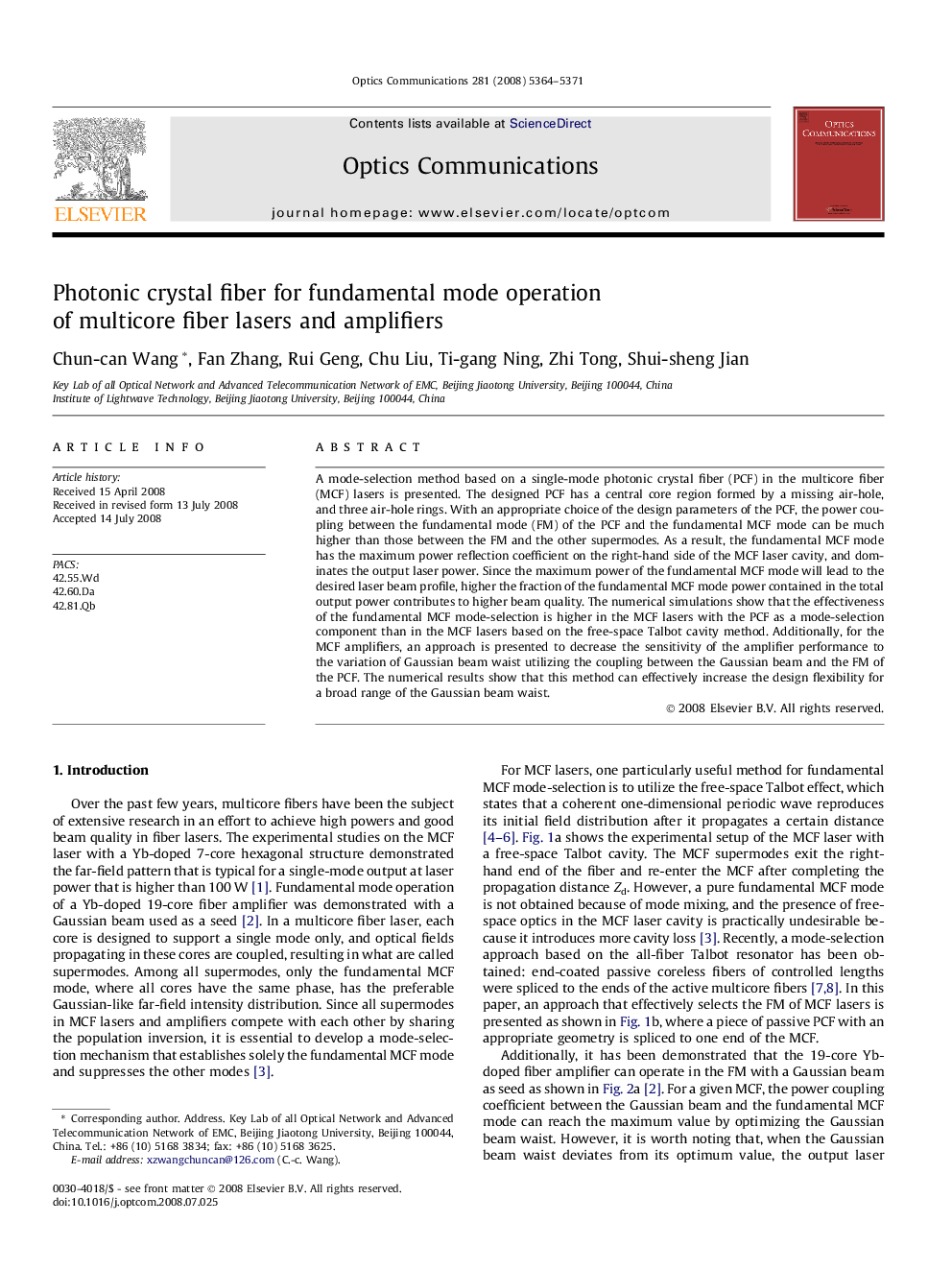| Article ID | Journal | Published Year | Pages | File Type |
|---|---|---|---|---|
| 1540486 | Optics Communications | 2008 | 8 Pages |
A mode-selection method based on a single-mode photonic crystal fiber (PCF) in the multicore fiber (MCF) lasers is presented. The designed PCF has a central core region formed by a missing air-hole, and three air-hole rings. With an appropriate choice of the design parameters of the PCF, the power coupling between the fundamental mode (FM) of the PCF and the fundamental MCF mode can be much higher than those between the FM and the other supermodes. As a result, the fundamental MCF mode has the maximum power reflection coefficient on the right-hand side of the MCF laser cavity, and dominates the output laser power. Since the maximum power of the fundamental MCF mode will lead to the desired laser beam profile, higher the fraction of the fundamental MCF mode power contained in the total output power contributes to higher beam quality. The numerical simulations show that the effectiveness of the fundamental MCF mode-selection is higher in the MCF lasers with the PCF as a mode-selection component than in the MCF lasers based on the free-space Talbot cavity method. Additionally, for the MCF amplifiers, an approach is presented to decrease the sensitivity of the amplifier performance to the variation of Gaussian beam waist utilizing the coupling between the Gaussian beam and the FM of the PCF. The numerical results show that this method can effectively increase the design flexibility for a broad range of the Gaussian beam waist.
